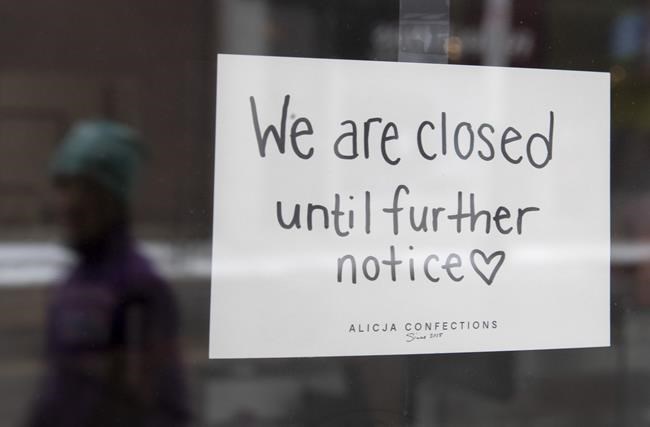OTTAWA — Canadian insolvency filings hit a 20-year low last year as government financial support offset the shock and economic uncertainty caused by COVID-19.
The Office of the Superintendent of Bankruptcy said Friday that there were 99,244 consumer bankruptcies and proposals along with business bankruptcies in 2020, down 30 per cent from the prior year.
Consumer insolvencies last year were down 30 per cent from 2019 at an 18-year-low, while business insolvencies in 2020 were down 24 per cent from 2019 and at their lowest level since tracking began in 1987.
“These historic low insolvency filings reflect the government aid programs that have kept many individuals and businesses afloat despite the significant financial distress caused by the pandemic," says Mark Rosen, chair of the Canadian Association of Insolvency and Restructuring Professionals.
Government subsidies, interest-free loans, provincial grants, and deferred loan payments removed financial pressures that often force insolvency decisions, he said in a news release.
"What we can’t see in the insolvency data yet is how things will change as the taps are turned off."
All provinces registered fewer consumer insolvency filings in 2020. Prince Edward Island led with a 43.1 per cent decrease compared with 2019, while Manitoba had the smallest percentage decrease at 19.7 per cent compared with the year earlier.
The arts, entertainment and recreation sector, as well as the management of companies and enterprises category had the largest increase in insolvencies, while construction and manufacturing had the largest declines.
With $198.1 million in liabilities, Le Chateau was the largest of six Companies' Creditors Arrangement Act filings in the fourth quarter, an OSB report said.
“Pandemic-related financial devastation forced many Canadian businesses to close their doors for good last year," said Rosen, adding that these closures aren't included in the insolvency data because many walked away without filing for bankruptcy.
Triggers such as calls from creditors, notices of eviction and foreclosures that often force consumers and businesses to seek debt-relief options were "virtually non-existent," added Andre Bolduc, a licensed insolvency trustee.
But Bolduc said creditors are now starting to increase collections.
“After a very long pause, we are starting to see individuals with judgments obtained against them as creditors attempt to catch them up on their payments,” he said.
This report by The Canadian Press was first published Feb. 5, 2021.
The Canadian Press
Note to readers: This is a corrected story. An earlier version included misspelled word 'not' in second to last para.



